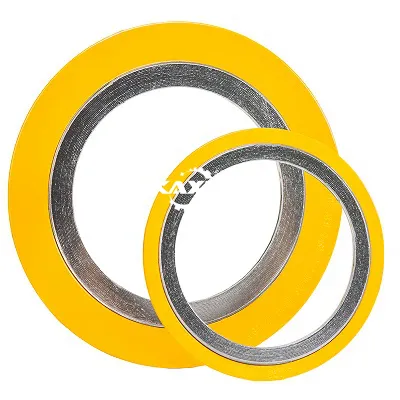Choosing the Right Spiral Wound Gasket for Your Application
2024-08-23
When it comes to selecting a gasket for high-pressure, high-temperature applications, spiral wound gaskets often come out on top. However, choosing the right spiral wound gasket for your specific application can be a complex task, given the variety of materials, sizes, and configurations available. This blog will explore the key factors to consider when selecting a spiral wound gasket to ensure optimal performance and reliability.
Understanding Your Application Requirements
Before selecting a spiral wound gasket, it’s crucial to understand the specific requirements of your application. Consider the following factors:
1. Temperature: Identify the operating temperature range of the application. Spiral wound gaskets can handle a wide range of temperatures, but the choice of filler material will significantly impact the gasket’s temperature resistance. For example, graphite fillers are suitable for high temperatures up to 1000°C, while PTFE fillers are ideal for lower temperature applications and offer excellent chemical resistance.
2. Pressure: Determine the operating pressure of the system. The metal strip material and thickness will influence the gasket’s ability to withstand high pressures. Stainless steel is commonly used for its strength and resistance to corrosion, while other alloys like Inconel may be chosen for extremely high-pressure environments.
3. Media: Consider the type of fluid or gas the gasket will be sealing. Different materials offer varying levels of chemical resistance. For example, graphite is resistant to most chemicals, while PTFE provides excellent resistance to aggressive chemicals and is non-reactive.
4. Flange Type: The type and condition of the flanges play a significant role in gasket selection. Ensure the gasket is compatible with the flange material and surface finish. Spiral wound gaskets are suitable for both raised face and flat face flanges, but the use of inner and outer rings may vary depending on the flange type.

Selecting the Right Materials
Choosing the right materials for the metal strip and filler is critical to the performance of the spiral wound gasket. Here are some common material options and their applications:
1. Metal Strip Materials:
- Stainless Steel (304, 316): Commonly used for its corrosion resistance and strength. Suitable for a wide range of applications, including oil and gas, chemical processing, and power generation.
- Carbon Steel: Used in less corrosive environments where cost is a factor. Suitable for applications where high corrosion resistance is not required.
- Inconel: A nickel-chromium alloy that offers excellent high-temperature and corrosion resistance. Ideal for harsh environments and applications involving aggressive chemicals.
2. Filler Materials:
- Graphite: Provides excellent temperature resistance and is suitable for applications up to 1000°C. It is chemically inert and offers good sealing performance in a variety of media.
- PTFE: Known for its chemical resistance and non-reactivity, PTFE is ideal for applications involving aggressive chemicals and temperatures up to 260°C.
- Mica: Suitable for high-temperature applications and environments where oxidation is a concern. Mica fillers offer good resistance to thermal shock and can withstand temperatures up to 1000°C.
Gasket Configuration
Spiral wound gaskets come in different configurations, each designed for specific applications:
1. Standard (Style R): These gaskets have no inner or outer rings and are used in low-pressure applications with flat face or raised face flanges.
2. Inner Ring (Style RIR): These gaskets include an inner ring that helps prevent over-compression and enhances blowout resistance. They are suitable for high-pressure applications and are used with raised face flanges.
3. Outer Ring (Style CGI): The outer ring provides centering and acts as a compression limiter. It is used in applications where gasket centering is crucial, such as in high-pressure and high-temperature environments.
4. Inner and Outer Rings (Style RCGI): These gaskets have both inner and outer rings, offering maximum blowout resistance, stability, and protection against over-compression. They are ideal for the most demanding applications, including high-pressure, high-temperature, and aggressive chemical environments.
Conclusion
Choosing the right spiral wound gasket involves understanding the specific requirements of your application, selecting appropriate materials, and choosing the correct gasket configuration. By considering factors such as temperature, pressure, media, and flange type, you can ensure optimal performance and reliability of the sealing solution. Spiral wound gaskets offer a versatile and durable option for a wide range of industrial applications, making them a preferred choice for sealing critical systems


